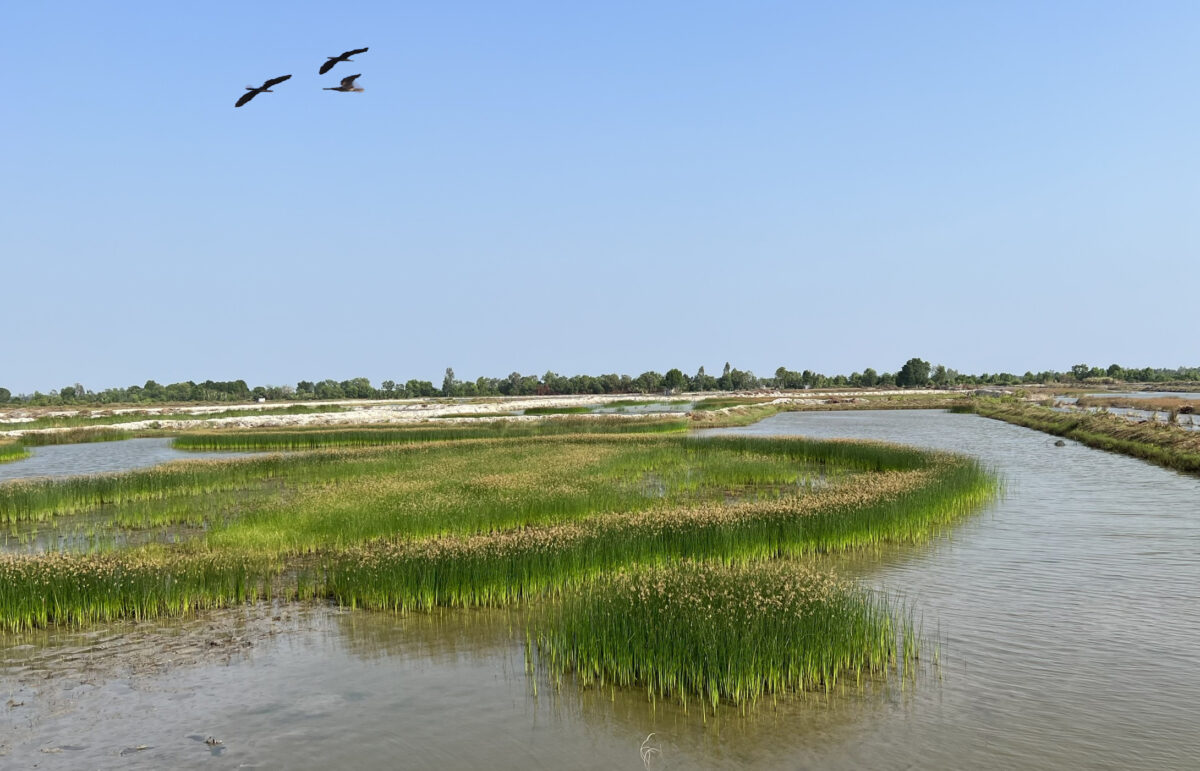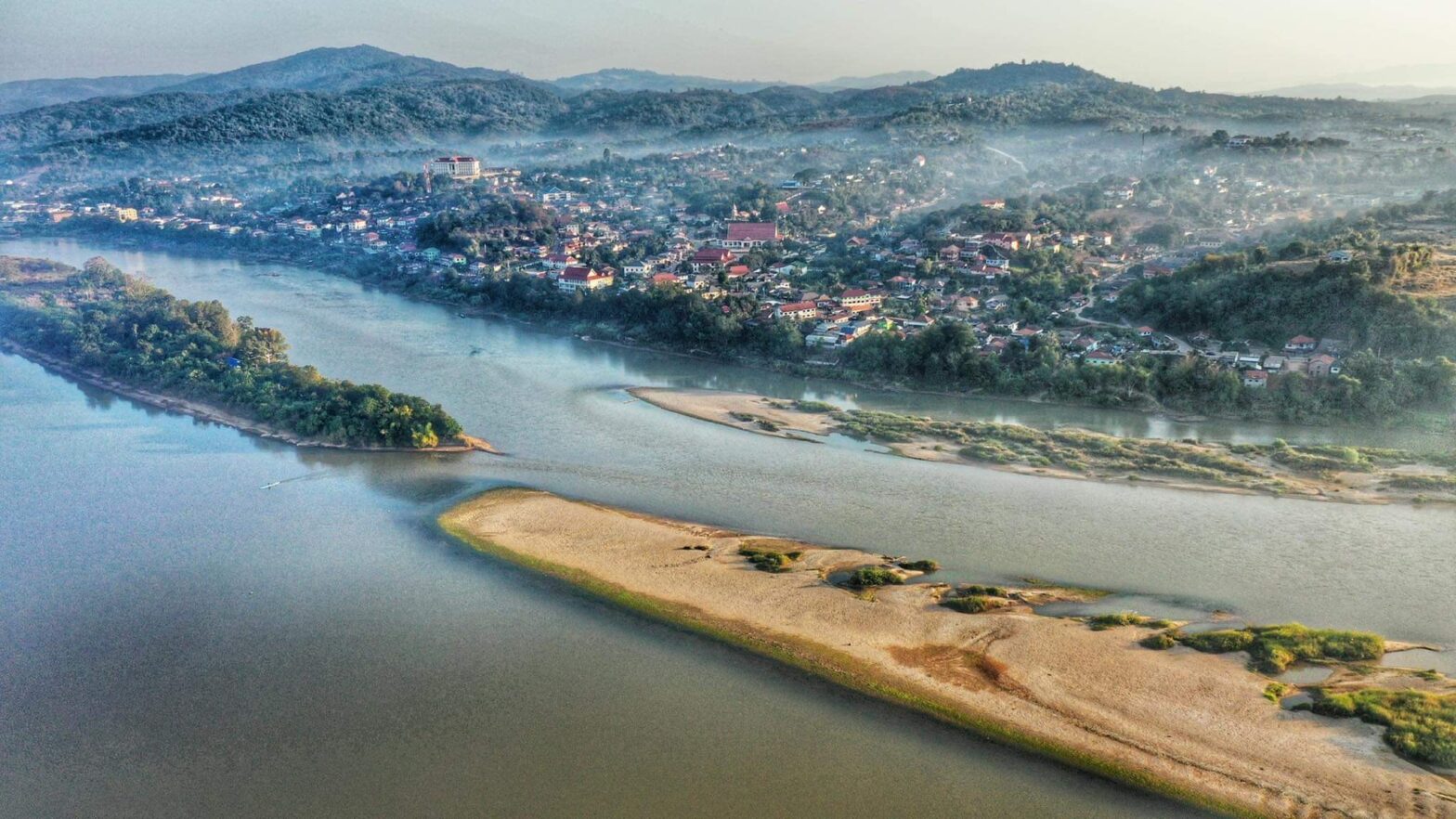SOC TRANG, VIETNAM – In late February, a lush green blanket of nan tuong grass covered Tran Hong Ni’s field in Hoa Tu 1 commune in Soc Trang province in Vietnam’s Mekong Delta.
Suddenly, a small bird with a long dark tail and grey wings shot up from the grass. It was a plain prinia, a species rarely seen in the area in the past three decades.
Around Ni’s grass field were empty paddies. The freshwater season favorable for rice farming had ended, signaling the start of the season suitable for aquaculture. Paddies then turn to ponds, waiting for saltwater to seep in to nurture the next shrimp crop.
But this year, the tides were already one month late in Soc Trang.
Farmers along the Ca Mau peninsula, which includes coastal provinces that make up a third of the Mekong Delta’s area, have been following a shrimp-rice model for three decades. Hailed as a flexible solution to naturally occurring fresh and saltwater seasons, this strategy has also been considered an exemplary climate change adaptation solution in light of rising saltwater intrusion.
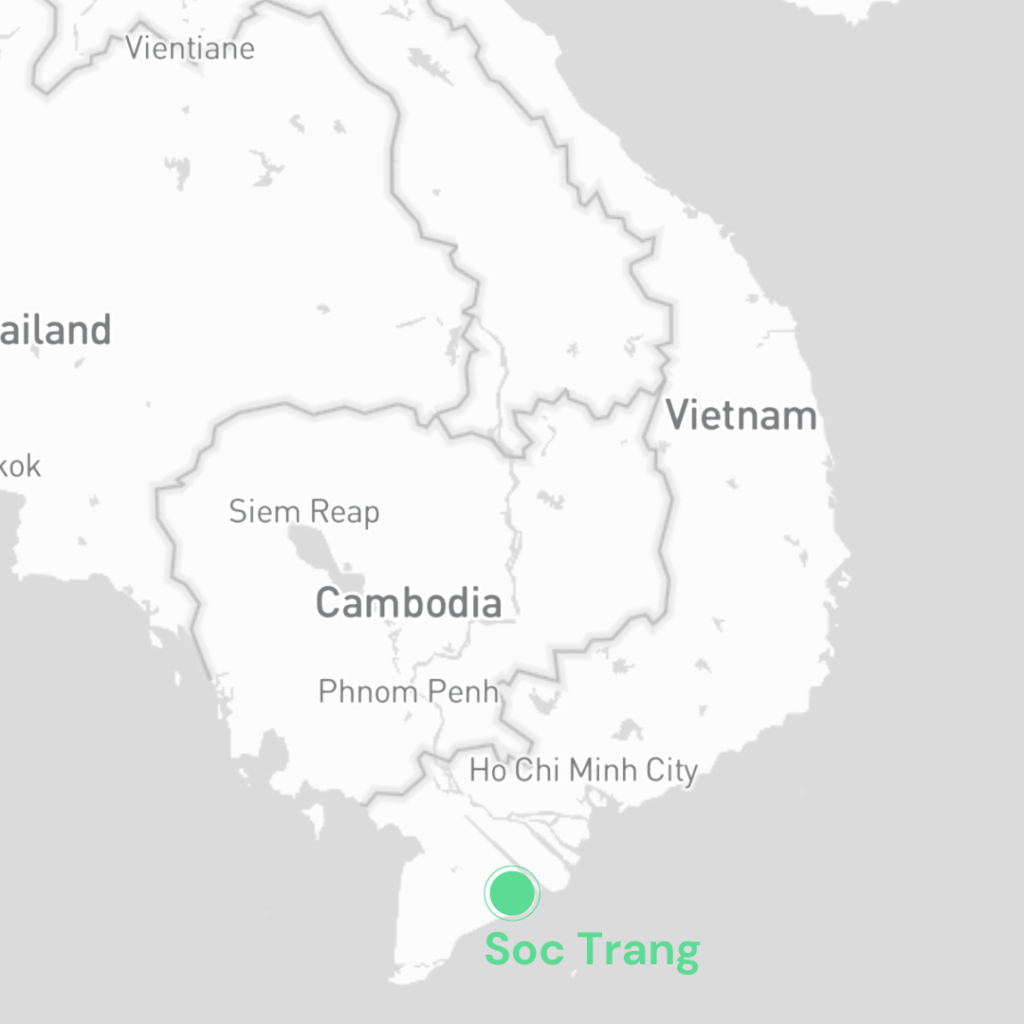
In Ca Mau province, where shrimp farms total 30,000 hectares to 50,000ha in a good year, authorities plan to convert even more low-yielding rice fields into the hybrid shrimp-rice model to increase productivity.
But behind catchphrases and slogans is a century-old salt and freshwater conflict in the region that saw dykes being built to prevent saltwater intrusion, only to later get destroyed to channel seawater to the fields.
“The whole ecosystem of the Ca Mau peninsula has drastically changed,” said Duong Van Ni, an expert on Mekong Delta biodiversity and president of the Mekong Conservancy Foundation. “There are even incidents of saltwater and freshwater existing in the same small area like a patchwork.”
Human intervention, he said, had chopped the ecosystem into miniscule bits, and the disconnection has resulted in drastic deviations from natural norms. But there is a solution on the horizon: replacing rice crops with nan tuong, a grass species native to the region.
The cons of the shrimp-rice model
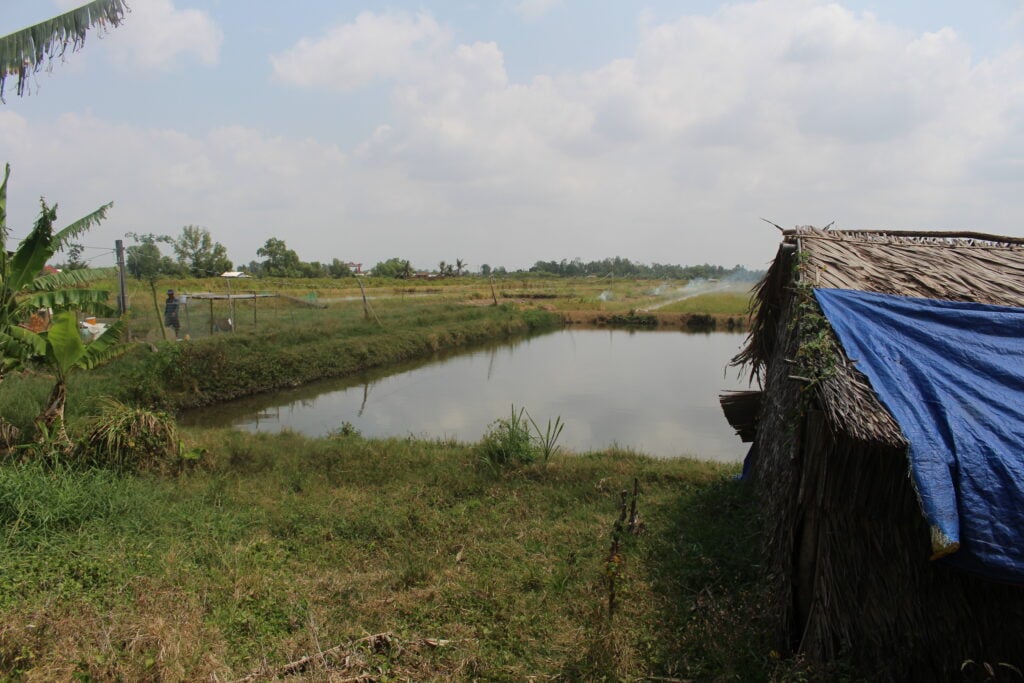
With intensifying climate change and rising sea levels, the effectiveness of the shrimp-rice model was being questioned as salinization was becoming more severe and unpredictable.
Local farmers have had to become accustomed to increasingly frequent incidents of shrimps thirsty for saltwater or rice awaiting freshwater. And this problem is not unique to Ca Mau, but common the Mekong Delta’s coastal provinces, with a total shrimp-rice area of about 162,000ha.
In addition, the rising cost of shrimp medication and rice fertilizers, together with decreased productivity caused by abnormal weather patterns due to climate change and water pollution, as well as challenges in finding buyers have compounded the issue, according to Chau Cong Bang, the deputy director of the Department of Agriculture and Rural Development of Ca Mau province.
This prompted scientists and farmers to test out a new model that could potentially restore balance to the ecosystem: replacing rice with nan tuong grass.
“In places where nan tuong grows, the ecosystem is generally in better shape, showing its positive impact in improving the environment,” said Bang. “We want to expand the area of this crop but have yet to find potential buyers. Meanwhile, rice and other crops are still prioritized.”
A livelihood from nan tuong
Nan tuong (Scirpus littoralis Schrad), a grass species native to the marshlands of the Mekong Delta, has become a source of hope for farmer Ni’s family. After witnessing the success of the shrimp-nan tuong production model in Ca Mau, Bac Lieu and Kien Giang, at the beginning of this year, Ni decided to experiment with nan tuong by growing it in a field that her family had left uncultivated for many years after failing to turn any profit from growing rice there.
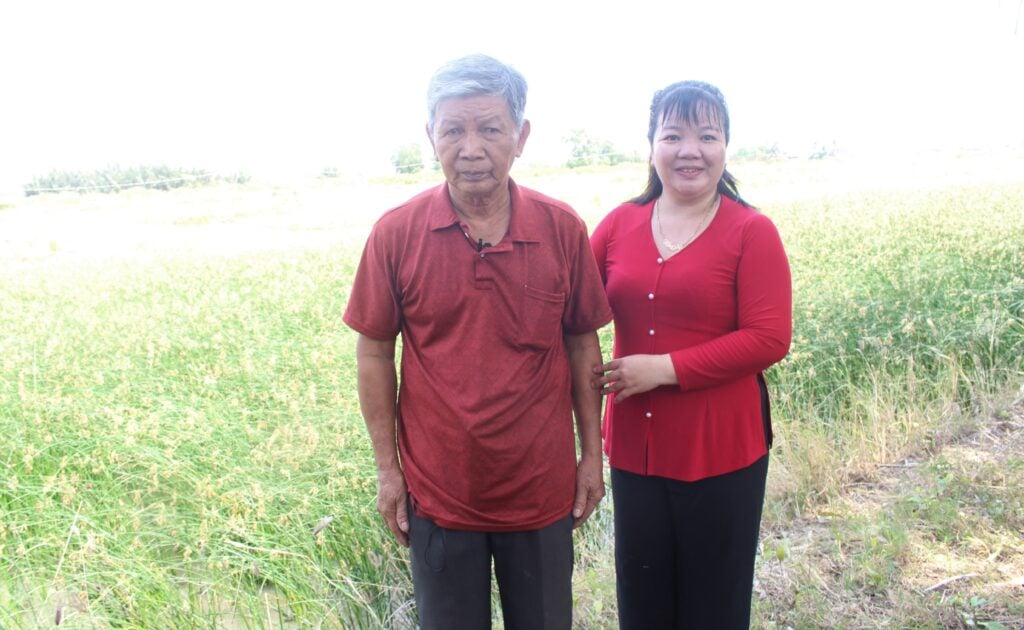
“If I succeed, other farmers would be inspired to switch to this model,” said Ni, who is . “It would be a way of taking the initiative to change for the better.”
“Nan tuong grows in saltwater, freshwater and brackish water. It thrives at the salinity levels of between 5 and 10 per mille, which is also a good environment for shrimps and crabs. It could also survive in an environment that has high salinity levels of up to 15 or 20 per mille, even though it would stop growing then,” explained Van Ni, the researcher.
“Growing nan tuong in shrimp and crab ponds using the method of extensive farming helps shrimps and crabs grow faster and reduces the risk of diseases by 30% compared to conventional shrimp farming practices,” Van Ni added.
Young nan tuong shoots are feed for shrimps and crabs. The grass’ mechanism of pumping oxygen through its empty culm down to its roots helps to oxidize the humus beneath it, preventing the propagation of weeds and algae, keeping the water clean and providing enough natural oxygen for shrimps and crabs to thrive.
However, its density should be limited to between 40% and 50% of the surface area of the pond, Van Ni explained.
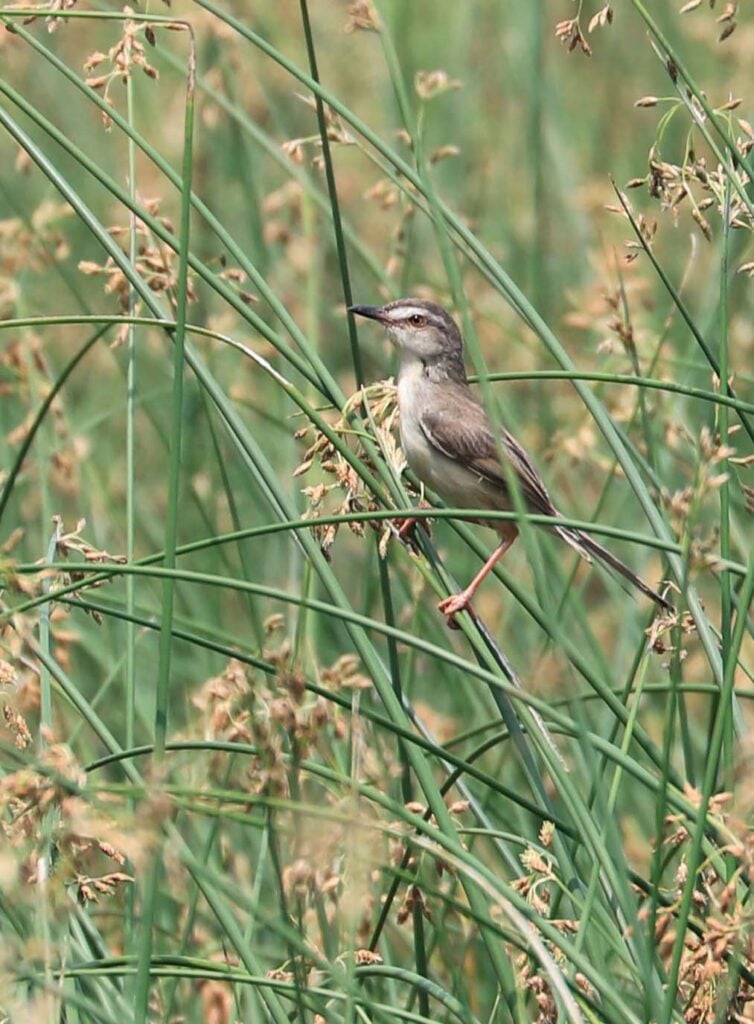
“Using the wild nan tuong growing naturally in ponds to feed shrimps and crabs is a practice that goes a long way back among local farmers,” said Nguyen Thanh Thuy, a 37-year-old farmer in Tan Phu commune, Thoi Binh district in Ca Mau.
She explained that nan tuong also prevents erosion and the collapsing of the pond banks and provides havens for shrimps and crabs to hide when the sun gets too hot or the rain gets too hard. It also requires very little effort from farmers, who do not have to spend money on pesticides or fertilizers.
In recent years, instead of having to prune the nan tuong on an annual basis, Thuy and other farmers in her village have also been able to sell it as a material for craft products, which has increased their confidence in pursuing this model.
With revenues from both shrimps and nan tuong, Thuy’s family and many others in this region are earning a moderate annual income of 100 to 150 million dong (US$4,260-$6,400).
High hopes for the new model
According to Van Ni, nan tuong has particularly high potential in areas prone to drought and with high salinity or acidity that are now uncultivated or used for growing rice that is alternated with other agriculture or aquaculture crops, which account for about 8% of the total area of the Mekong Delta.
As nan tuong can thrive in a wide range of ecosystems, it can potentially be grown in more than 50% of the total area of the Delta.
Van Ni introduced nan tuong to many handicraft manufacturers in 2005, but back then the companies were already using products made from common water hyacinth (pontederia crassipes), and were reluctant to take the risk on a material they had never heard of.
In 2018, along with his collaborators, Van Ni started to support farmers in the provinces of Ca Mau, Bac Lieu and Kien Giang to implement a self-sufficient “circular ecosystem” model built around the production of nan tuong and shrimp.
Accordingly,” nan tuong is planted in the shrimp pond to recover the ecosystem, and the farmers are trained in weaving skills and helped to form handicraft teams.
When the teams grow strong with sufficient financial and management capacities, they will become cooperatives, and eventually enterprises that can negotiate and sign contracts with buyers.
“We have laid out the whole roadmap,” Van Ni said. He believes this model does not only create income-generation opportunities, especially for women, but also allows them to spend more time at home to take care of the household and their children, and create stronger bonds within each neighborhood via weaving training activities.
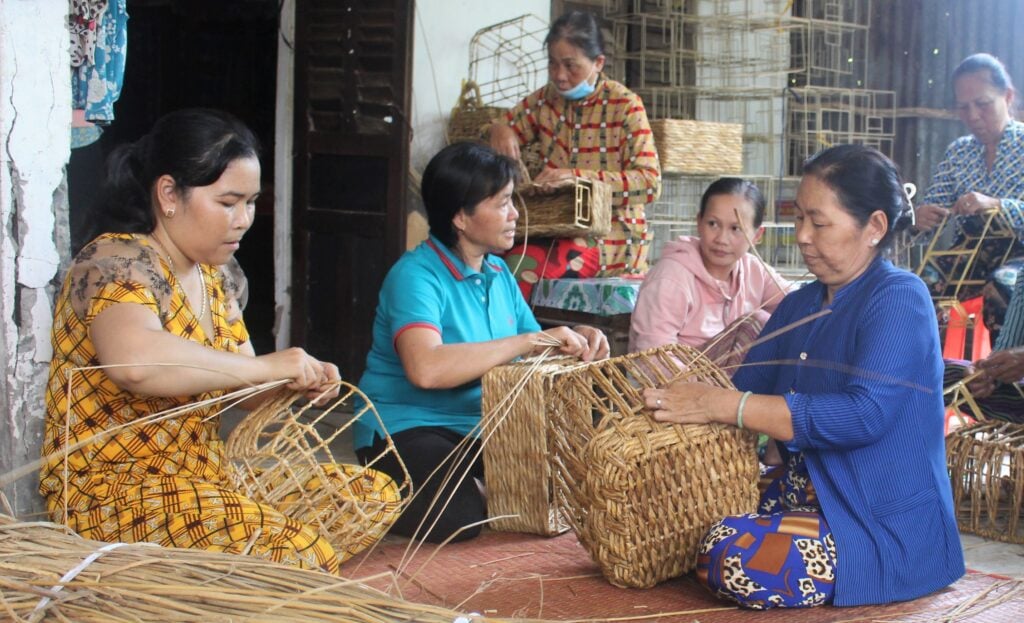
Dinh Thi Tram of My Xuyen district, Soc Trang, is one example. She used to pull 17-hour shifts peeling prawns in a factory. But since her children started school, she had to stay at home to take care of them. That’s what brought her to weaving nan tuong.
“This work is easy. I have time to take the kids to school, cook and work whenever I’m free,” Tram, 37, said. “The pay is alright. I get about 1 million dong ($42) each month” – that’s double what she would get making fake eye lashes, which was also putting strain on her eyes.
Founded at the start of 2021, MCF Vietnam is a company managing and coordinating more than 20 handicraft teams and cooperatives manufacturing products made from nan tuong. Since early 2022, via the Binh Duong-based company Vietnam Housewares, each month about 30,000 to 40,000 of these products are exported to Australia and the United States.
And the ecosystem continues to expand. At the beginning of this year, in My Xuyen district of Soc Trang province, after just over four months of experiments with nan tuong, with the support of the district’s Women’s Union, 27 handicraft teams were established with about 200 craftspeople, most of them women.
The road to turning nan tuong into a sustainable livelihood is not likely to be all smooth and flat, and adjustments are likely underway pending customer feedback, but the species has nonetheless offered a possible nature-friendly solution to improve the damaged ecosystem of a vast region as well as the livelihood of its inhabitants in the next decade or two.


